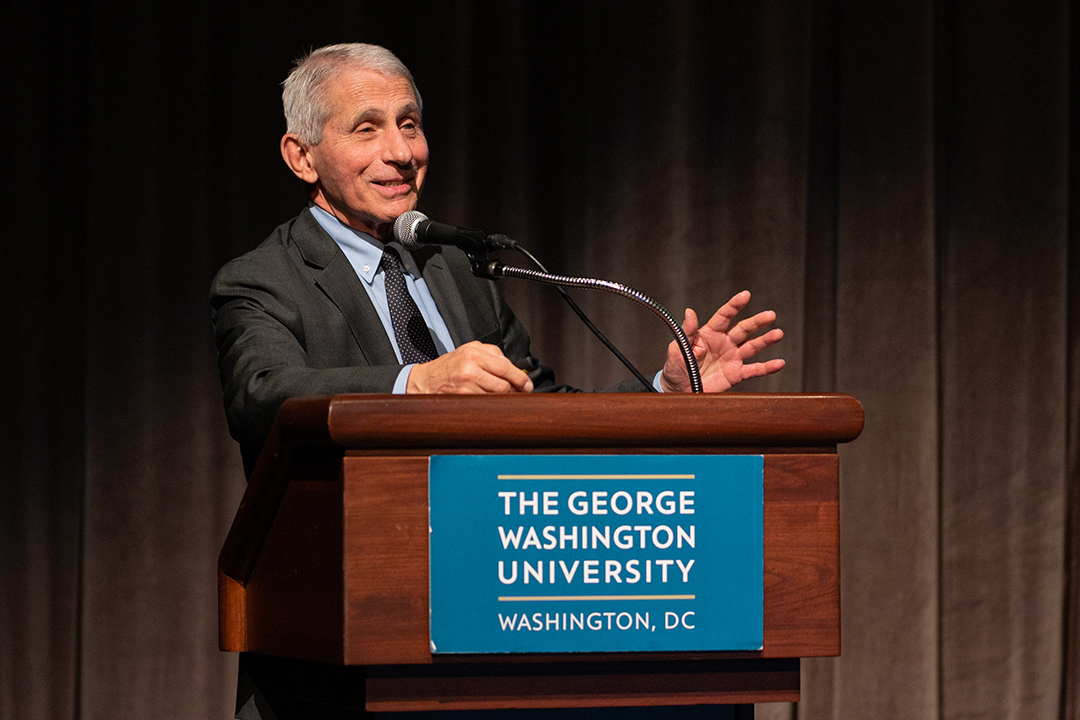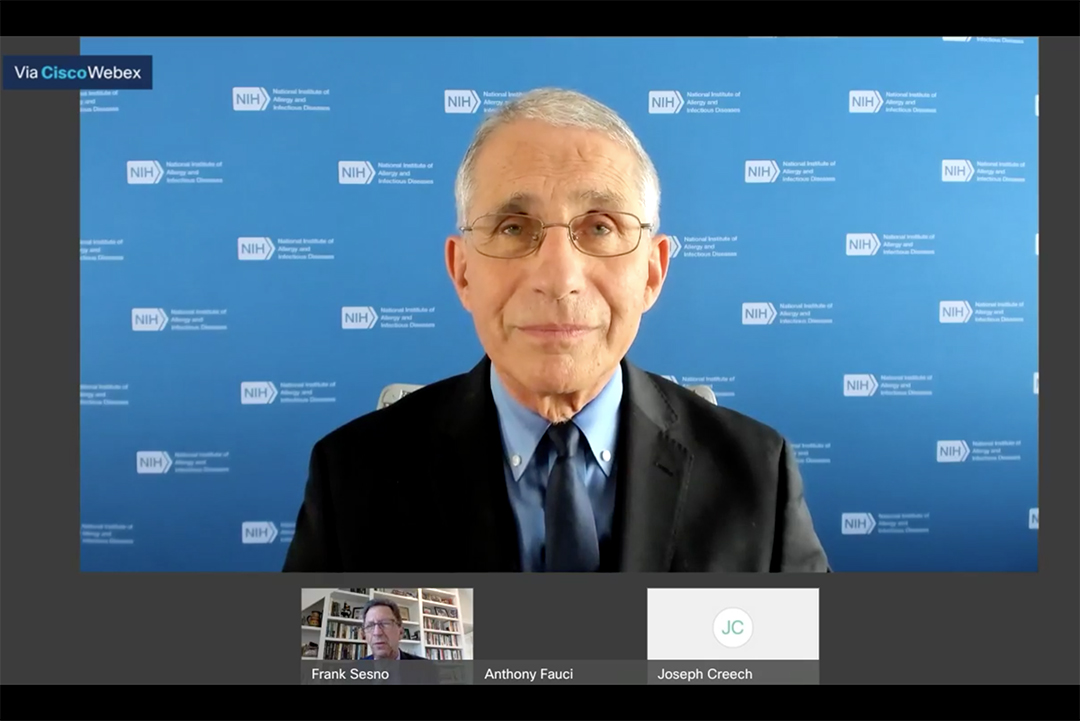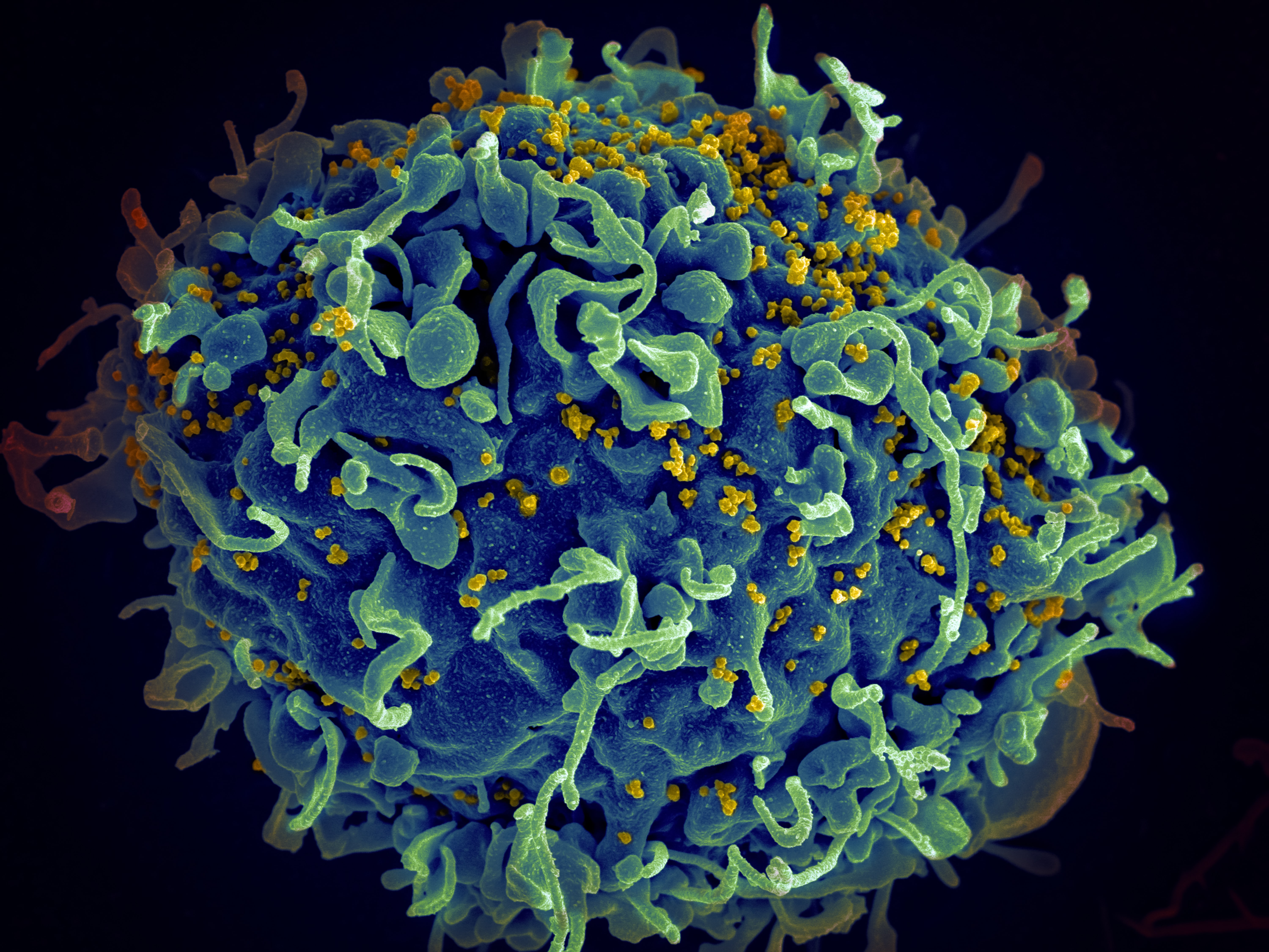Anthony S. Fauci, in his last official speaking appearance as director of the National Institute of Allergy and Infectious Diseases at the National Institutes of Health (NIH), told first-year students at the George Washington University School of Medicine and Health Sciences to follow their passions and to follow the science.
“People see me now as the head of a research institution, they think that I was doing research from the time I entered into college,” Fauci said. “That was not the case. I didn't have a linear pathway to where I got. There were things that occurred that I never would have predicted, and there were opportunities that popped up in front of me that made me change the direction of my career.”
Fauci gave the opening address during the Ninth Annual GW Clinical Public Health (CPH) Summit on HIV. He was joined by Harold Phillips, director of the White House Office of National AIDS Policy, as well as senior HIV/AIDS officials from seven states and the District of Columbia.
The event, “How Clinicians Can Help End the HIV Epidemic: Prescriptions for State and City Action Plans,” is the first in a series of annual clinical public health education summits designed to prepare students in the SMHS medical doctor program for the roles they will need to take on as physicians to improve community health. These summits, which include the topics of asthma and obesity in addition to HIV, serve as the cornerstone of the CPH curriculum, offering applied educational experiences enabling students to develop the public health leadership and interprofessional skills needed to identify, understand and improve community health issues both within and beyond the walls of the clinic.
Over the course of the three-day summit in December, students broke into teams to craft strategic plans tailored to HIV/AIDS epidemic patterns, health system capabilities and community factors specific to their assigned jurisdictions. On the final day of the summit, the students presented their plans to a panel of academic, federal and state experts, receiving advice and feedback on their strategies.
“I think this type of summit could not be a better way for you to culminate this first 14 weeks of your life as a young physician,” said Barbara L. Bass, RESD ’86, the Bloedorn Professor of Administrative Medicine, GW vice president for health affairs, SMHS dean and CEO of The GW Medical Faculty Associates. “The notion of being able to take care of populations and communities with a different set of tools to use for advocacy is really going to be make you a different type of physician for the communities that you serve. I hope you that will never let that principle go and will use that really wisely throughout your careers.”
Lessons for the Future
As he has done since SMHS launched the HIV Summit, Fauci offered the medical students lessons he learned that helped shape his career, ultimately serving as a key adviser on HIV AIDS issues to seven presidents, an important architect of the White House’s Emergency Plan for AIDS Relief and possibly the world’s most identifiable figure in medicine and public health.
In June 1981, the journal Morbidity Mortality Weekly reported on five gay men from Los Angeles who had all contracted pneumocystis, a serious fungal infection in the lungs. A month later the journal ran a similar report, this time with 26 gay men, not only from Los Angeles, but also New York City and San Francisco, suffering from pneumocystis, kaposi sarcoma—an unusual kind of cancer — as well as an array of other opportunistic diseases.
“I got goose pimples,” recalled Fauci. “I said, ‘oh, my goodness, we’re dealing with a brand new disease!’ Whoever heard of a brand new disease that no one had ever really experienced before?”
That moment marked a turning point in Fauci’s career, and the beginning of his 40-year journey researching HIV.
“If you get one message from my discussion today,” Fauci told the audience, “it’s that lots of things are going to pop up in front of you, and you should really take a look and consider the possibility of taking advantage of them.”
Illustrating another important lesson learned, Fauci recalled an incident that opened his eyes to the vital importance community engagement can play in the scientific process.
In 1988, playwright, film producer and co-founder of both the Gay Men’s Health Crisis and Act Up Larry Kramer published a scathing rebuke of the early research response to the HIV epidemic. Kramer called out Fauci by name in an editorial that appeared on the front page of the San Francisco Examiner titled, “I Call You Murderers: An Open Letter to an Incompetent Idiot, Dr. Anthony Fauci of the NIH.”
At the time, Fauci said, AIDS activists thought HIV wasn’t a high priority for the U.S. government. Those activists, he said, were correct. Rather than ignore Kramer and the AIDS activists, Fauci said he chose to embrace the opportunity to meet, leading to more productive interactions among community members, scientists and regulators.
“I believe [that] was one of the best things I ever did,” he said. “I engaged these men and women who were marching against the government rigidity. This was not the kind of hate and threats that we see now in science. These activists wanted science to work FOR them and to work faster. This was good stuff. This was trying to gain our attention to tell us, please listen to us.”
In his remarks, Phillips, director of the White House Office of National AIDS Policy, offered an overview of the U.S. national strategy on HIV and the Biden Administration’s efforts to address the 40-year pandemic.
The national strategy targets four key goals: preventing of new infections, improving HIV-related health outcomes, reducing HIV-related disparities and integrating coordinated efforts to address the epidemic.
“In terms of HIV in the United States today, there are 1.2 million people living with HIV, but nearly one in eight have not been diagnosed,” Phillips said. However, each year there are roughly 35,000 new infections. Stigma and discrimination, he explained, as well as lack of awareness that HIV is still impacting many people the United States are likely to blame despite successful treatments that have changed HIV infection from a rapidly fatal diagnosis into a treatable chronic disease.
“Our goal by the year 2030 is to decrease the number of new infections down to 3,000 or less,” Phillips said.





